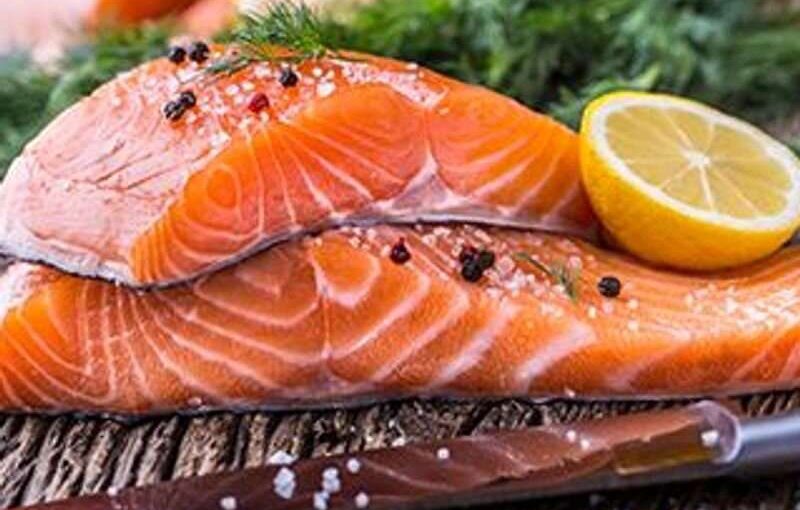In the refrigerated grocery store aisle, meat alternatives greatly outnumber plant-based seafoods. But more mock seafood options are needed because of unsustainable fishing and aquaculture practices, which can deplete the supply and harm the environment. Today, researchers present a new approach for creating desirable vegan seafood mimics that taste good, while maintaining the healthful profile of real fish. They 3D-printed an ink made from microalgae protein and mung bean protein, and their proof-of-concept calamari rings can even be air-fried for a quick, tasty snack.
The researchers will present their results at the fall meeting of the American Chemical Society (ACS).
“I think it’s imminent that the seafood supply could be very limited in the future,” adds Poornima Vijayan, a graduate student who is presenting the work at the meeting. “We need to be prepared from an alternative protein point of view, especially here in Singapore, where over 90% of the fish is imported.”
People around the world eat a lot of seafood, but the oceans are not an infinite resource. Overfishing has depleted many wild fish populations. That lack of sustainability, combined with heavy-metal and microplastic contamination, as well as ethical concerns, have pushed some consumers toward plant-based mimics. But such alternatives are still difficult for seafood lovers to find.
While some mock seafood products — such as imitation crabmeat made from minced and reshaped pollock or other white fish — are already on the market, making mimics from plants has been a challenge. It’s hard to achieve the nutritional content, unique textures and mild flavors of cooked fish meat using vegetables or fungi. “Plant-based seafood mimics are out there, but the ingredients don’t usually include protein. We wanted to make protein-based products that are nutritionally equivalent to or better than real seafood and address food sustainability,” says Dejian Huang, Ph.D., the principal investigator of this research.
Recently, Huang and his research group at the National University of Singapore used legume protein to develop better seafood mimics. And they replicated the flakiness and mouth feel of real fish by 3D printing a protein-based ink with a food-grade 3D printer. Depositing the edible ink layer by layer created different textures, some fatty and smooth and others fibrous and chewy, in a single product.
“We printed salmon filets with protein from red lentils because of the protein’s color, and we’ve printed shrimp,” says Huang. “Now, we wanted to print something else interesting with the potential for commercialization — calamari rings.”
In this work, the team tested two sustainable, high-protein plant sources: microalgae and mung beans. Some microalgae already have a “fishy” taste, which Vijayan says made them a good candidate to use in the squid-ring analogue. And mung bean protein is an underutilized waste product from manufacturing starch noodles, also called cellophane or glass noodles, which are a popular ingredient in many Asian dishes.
advertisement
The researchers extracted microalgae and legume proteins in the lab and combined them with plant-based oils containing omega-3 fatty acids. In the end, the nutritional profile of the high-protein vegan paste was similar to that of calamari rings from squid. Then, the paste was subjected to temperature changes, allowing it to be easily squeezed out of a 3D printer’s nozzles and layered into rings. Finally, the team assessed the finished rings’ taste, smell and appearance.
3D printing gave the seafood mimic structure and texture, but consumers will still want to bake, fry or sauté it, just like they do with real squid, says Huang. So, in an initial cooking test, Vijayan air-fried some of the samples as they would be prepared for a snack. The researchers tried the plant-based calamari, remarking on their acceptable taste and promising texture properties.
Before conducting consumer tests, though, Vijayan wants to optimize the product. “The goal is to get the same texture and elastic properties as the calamari rings that are commercially available,” she says. “I’m still seeing how the composition impacts the product’s elasticity and the final sensory properties.”
And while this plant-based mimic might provide a seafood fix for people with allergies to mollusks, which includes squid, Huang isn’t sure whether people could be sensitive to its ingredients. “I don’t think that there are many known cases of allergies to microalgae proteins or mung bean proteins. But we don’t know yet because it’s still a new combination,” he says.
In the near future, the team plans to develop many prototypes and assess how easily they can be developed for large-scale food manufacturing. Huang expects that in the next few years these calamari-like products could be available in fine-dining restaurants or specialty outlets. “I think people will like our plant-based mimic. From a novelty perspective, it has that seafood taste but comes from only sustainable plant-based sources,” concludes Vijayan.


